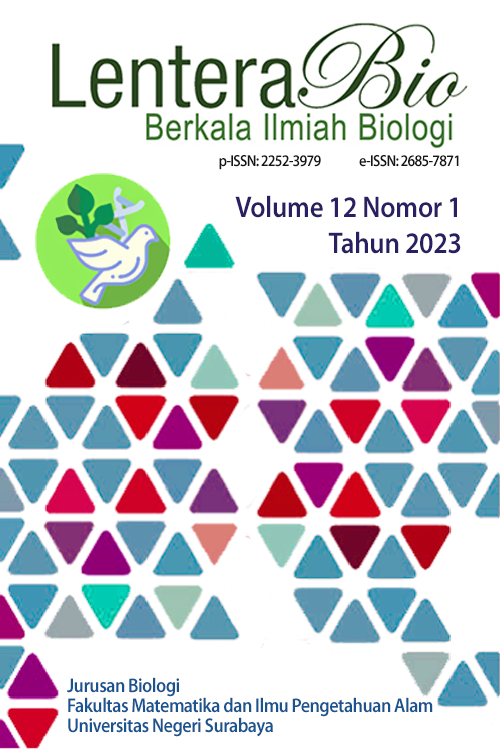Utilization of Banana Peel and Leaf Litter Compost on the Remediation Process of Oil Waste Contaminated Soil
DOI:
https://doi.org/10.26740/lenterabio.v12n1.p82-89Abstract
Used oil that contaminated soil indicated by high levels of Total Petroleum Hydrocarbon (TPH) can lead decrease soil quality. One way to overcome this is with bioremediation. This study aims to determine: 1) the quality of compost made from banana peel and leaf litter, 2) the effect of banana peel and leaf litter compost addition to decrease TPH levels, and 3) the optimal concentration of compost to decrease TPH levels on bioremediation process of oil waste contaminated soil. This study was experimental used two-factorial completely randomized design, namely the type of compost of banana peel, leaf litter, and their combination and the type of concentration 20%, 40%, and 60% with 5 repetitions, so there are 45 units. The research parameters that measured include: 1) nutrient content of the three types of compost, 2) percentage of initial and final TPH levels, and 3) the optimal compost concentration in reducing TPH levels. Data of nutrient content were analyzed quantitative descriptive by comparing with Hardjowigeno’s criteria (2003) and the data of decreased TPH levels were analyzed by two-way ANOVA and continued with Duncan's test. The results showed that: 1) the combination of banana peel and leaf litter compost contained very high N 1.342%, very low C 0.29% and C/N ratio 0.216; 2) the three types of compost and compost concentration affect the decreased levels of TPH; 3) the type compost combination and concentration of 60% was the optimal type and concentration of compost to decrease TPH levels with a percentage decrease of 73.63%.
Downloads
Published
How to Cite
Issue
Section
License
Copyright (c) 2023 LenteraBio : Berkala Ilmiah Biologi

This work is licensed under a Creative Commons Attribution-NonCommercial 4.0 International License.
Hak Cipta (c) LenteraBio: Berkala Ilmiah Biologi
Karya ini dilisensikan di bawah Lisensi Internasional Creative Commons Attribution-NonCommercial 4.0.
Pemberitahuan Hak Cipta.
Hak cipta dari artikel yang diterima untuk diterbitkan akan diberikan kepada jurnal sebagai penerbit jurnal. Hak cipta yang dimaksud meliputi hak untuk menerbitkan artikel dalam berbagai bentuk (termasuk cetak ulang). Jurnal mempertahankan hak penerbitan atas artikel yang diterbitkan.
 Abstract views: 871
,
Abstract views: 871
, PDF Downloads: 1559
PDF Downloads: 1559











